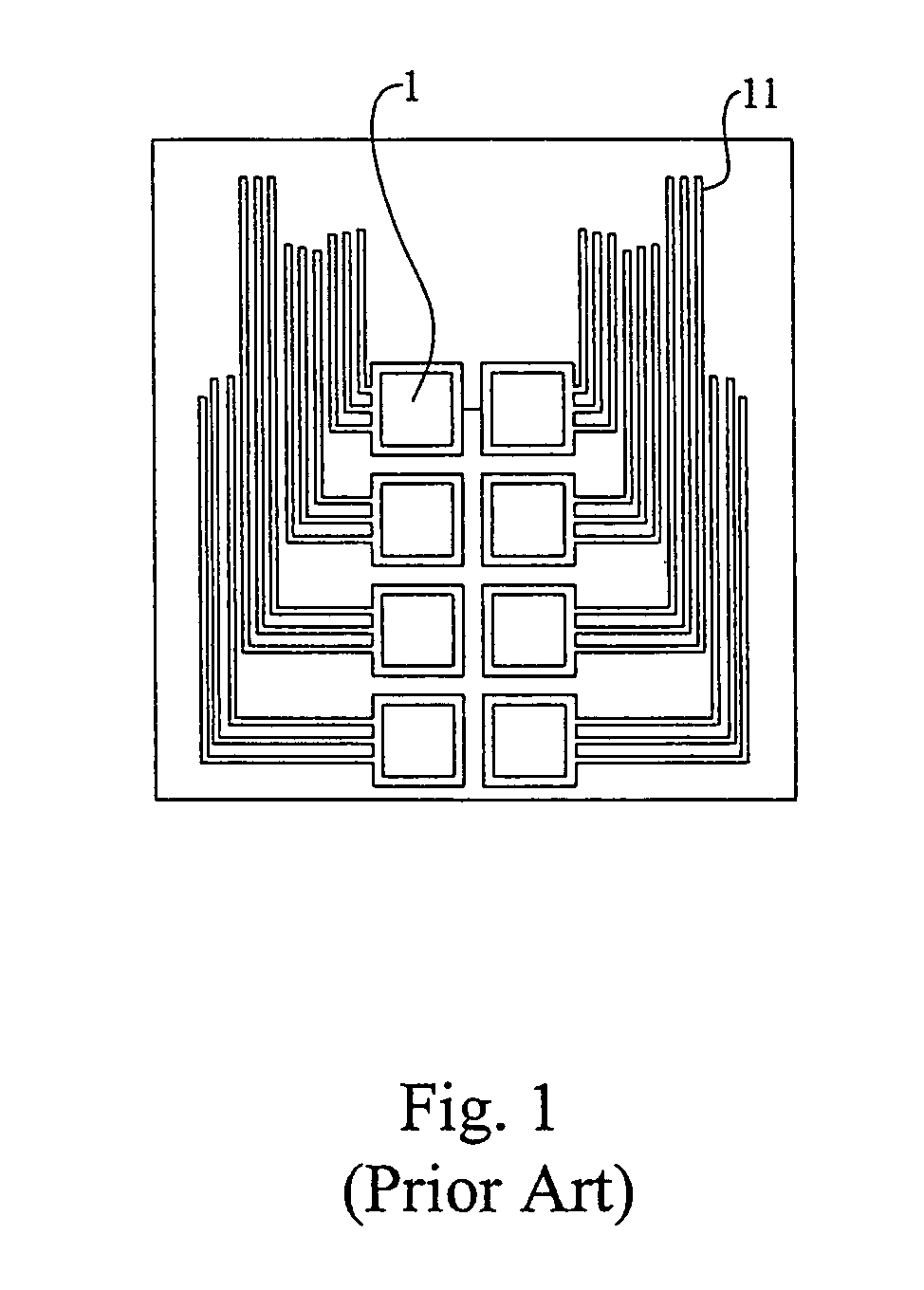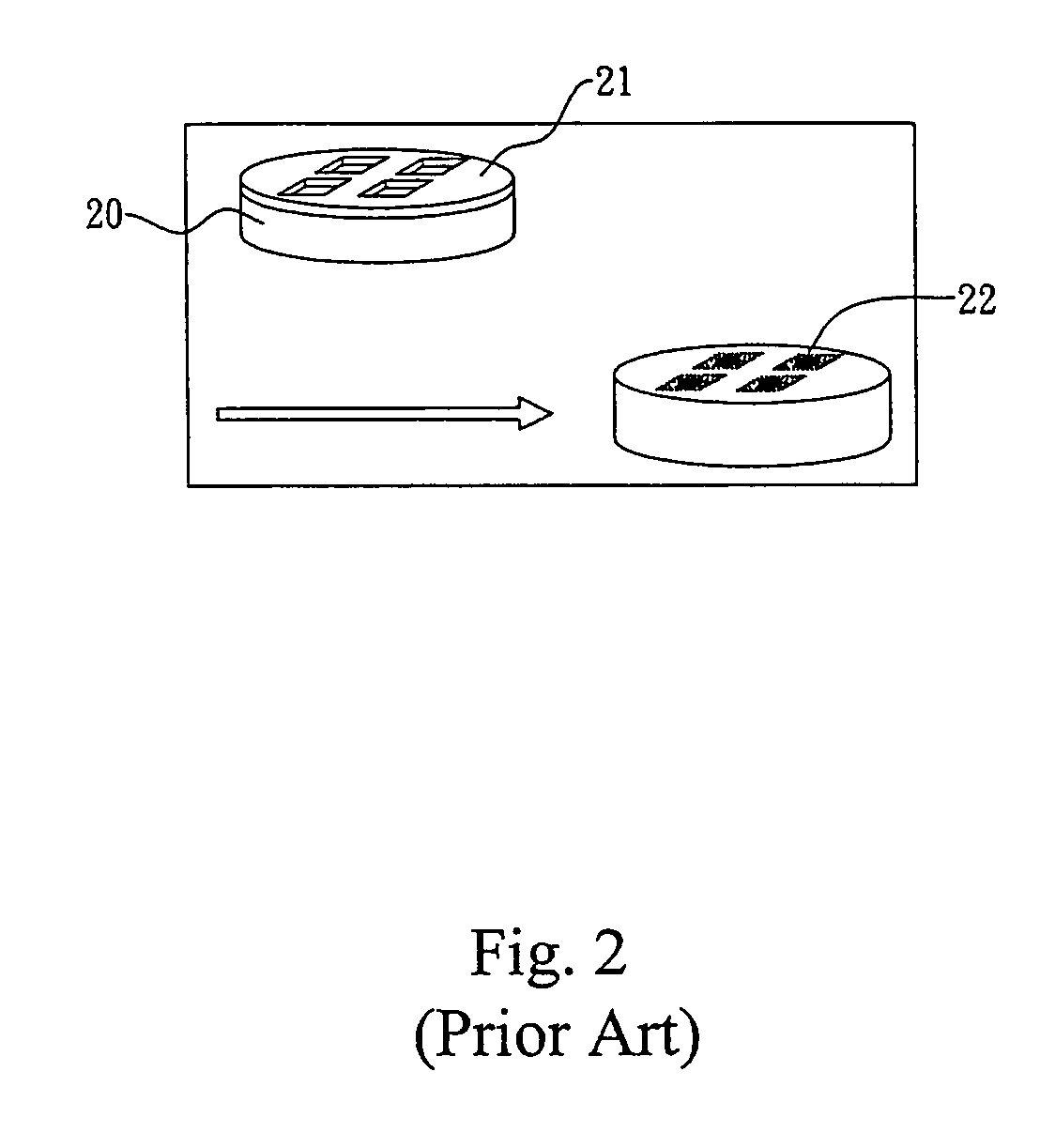Microelectronic positioning for bioparticles
a bioparticle and micro-electronic technology, applied in biochemistry, biochemical apparatus and processes, enzymes, etc., can solve the problems of unbalanced nutrient supply, the inability to make cells uniformly position and distribute, and the inability to make cells. to be easily displaced and distributed
- Summary
- Abstract
- Description
- Claims
- Application Information
AI Technical Summary
Benefits of technology
Problems solved by technology
Method used
Image
Examples
first example
[0023]In the first example, an electrode array 40 is set on an inner sidewall of a vessel cell culture system (not shown). The electrode array 40 is composed of a plurality of parallel interdigitated castellated electrodes 42. First, the latex particle solution is introduced into the vessel cell culture system, and then the adjacent interdigitated castellated electrodes 42 are applied with the first AC signal with 0 degree phase and the second AC signal with 180 degree phase individually. The first AC signal and the second AC signal are both have 20 KHz frequency and 14 Vpp voltage, and the conductivity of the latex particle solution is 1×10−4 S / m. Referring to FIG. 4, the latex particles will gather on the central portion of the interdigitated castellated electrodes.
second example
[0024]Different from the first example, the second example changes the phase of the second AC signal to 90 degree. As such, the adjacent interdigitated castellated electrodes 42 are applied with the first AC signal with 0 degree phase and the second AC signal with 90 degree phase. The first AC signal and the second AC signal are both have 20 KHz frequency and 20 Vpp voltage, and the conductivity of the latex particle solution is 1×10−4 S / m. Referring to FIG. 5, the result reveals that the latex particles gather in the space between the adjacent teeth-like electrodes of the same interdigitated castellated electrode 42, and the latex particles periodically gather in the space without electrodes.
[0025]According to the above examples, the present invention can apply AC signals with different phases unto adjacent electrodes individually. As such, the latex particles can gather in particular regions so as to reach electric positioning.
third example
[0026]In the third example, an electrode array 60 is set on an inner sidewall of the vessel cell culture system. The electrode array 60 is divided to a plurality of electrode groups 62, and each electrode group 62 has four adjacent electrodes 622. Four AC signals with 0 degree, 90 degree, 180 degree and 90 degree phase are individually applied unto one of the four adjacent electrodes 622 of each electrode group 62 so that each of the adjacent electrodes 622 has the AC signal with different phase applied thereupon. Each electrode 622 has 24 KHz frequency and 18 Vpp Voltage, and the conductivity of the latex particle solution is 1×10−4 S / m. Referring to FIG. 6, under such the circumstance, the latex particles produce violent vibrations, and thus the latex particles uniformly distribute.
PUM
| Property | Measurement | Unit |
|---|---|---|
| conductivity | aaaaa | aaaaa |
| voltage | aaaaa | aaaaa |
| frequency | aaaaa | aaaaa |
Abstract
Description
Claims
Application Information
 Login to View More
Login to View More - R&D
- Intellectual Property
- Life Sciences
- Materials
- Tech Scout
- Unparalleled Data Quality
- Higher Quality Content
- 60% Fewer Hallucinations
Browse by: Latest US Patents, China's latest patents, Technical Efficacy Thesaurus, Application Domain, Technology Topic, Popular Technical Reports.
© 2025 PatSnap. All rights reserved.Legal|Privacy policy|Modern Slavery Act Transparency Statement|Sitemap|About US| Contact US: help@patsnap.com



